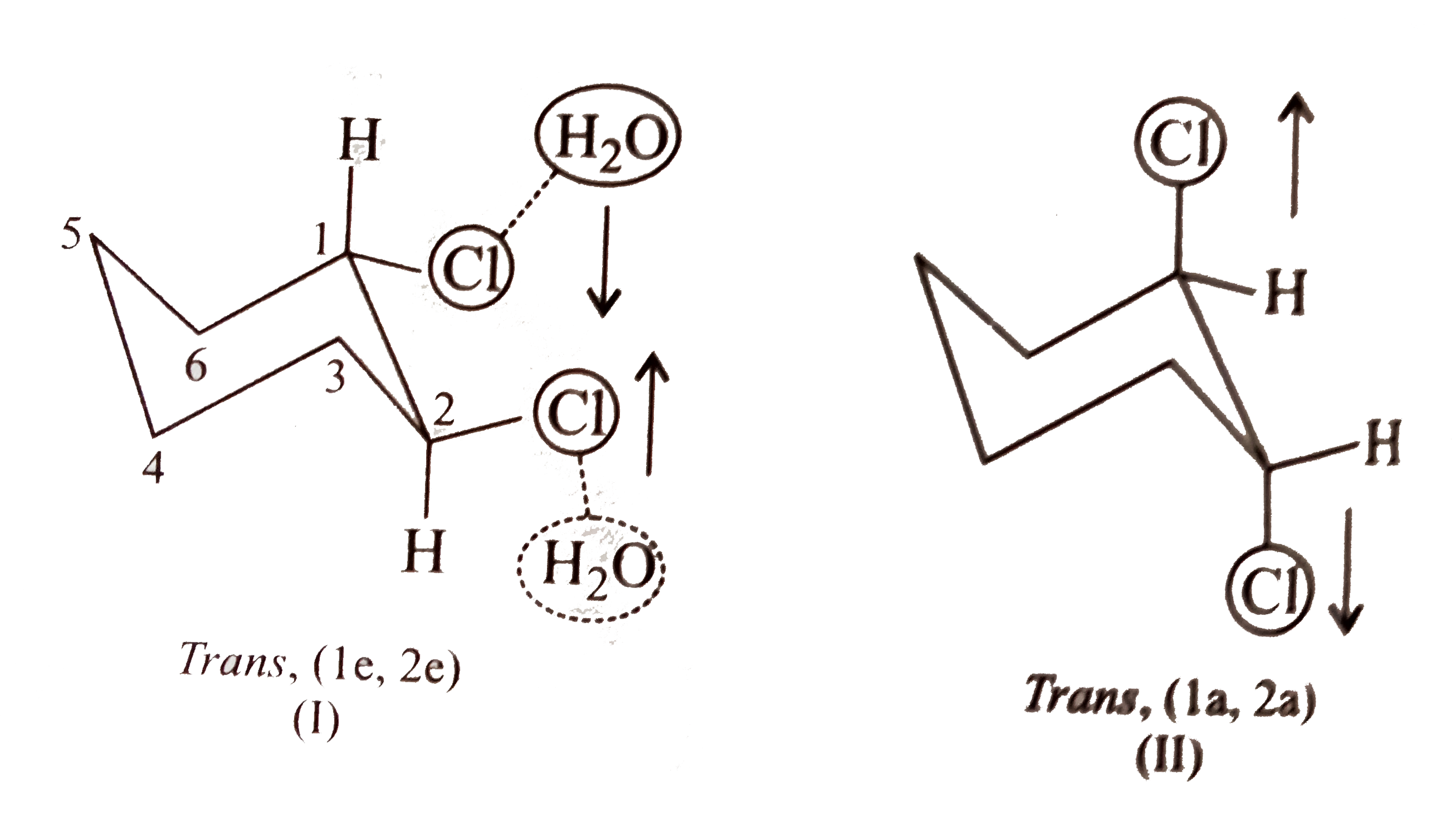Equal amounts of (e, e) and (a, a) conformers of trans-1,2-dichloro cyclohexane exist in non-polar solvents but the (e, e) conformer exists in polar solvents. Explain.
Video Solution
Text Solution
(I) 
In (I), there is dipole-dipole repulsion between two equation C1 atoms. It partially destabilises the sterically more fovoured (e, e) conformed bot not the (a, a) conformed (II) where C1 atoms are further apart. Therefore, the conformers (I) and (II) coxist together because their energies are very close. But the polar solvent molecules surround the C1 atoms by dipole-dipole attraction and relieve the dipole-dipole repulsion between C atoms themselves. Hence, the lower energy (e, e) conformation (I) perdominates in polar solvents.
|
Topper's Solved these Questions
- ALKANES AND CYCLOALKANESBOOK - CENGAGE CHEMISTRYCHAPTER - ALKANES AND CYCLOALKANESEXERCISE - Paragraph for problem
24 Videos
- ALKANES AND CYCLOALKANESBOOK - CENGAGE CHEMISTRYCHAPTER - ALKANES AND CYCLOALKANESEXERCISE - True and False
1 Videos
- ALKANES AND CYCLOALKANESBOOK - CENGAGE CHEMISTRYCHAPTER - ALKANES AND CYCLOALKANESEXERCISE - SOLVED EXAMPLES
19 Videos
- ALKENES AND ALKADIENESBOOK - CENGAGE CHEMISTRYCHAPTER - ALKENES AND ALKADIENESEXERCISE - Single correct Answer
14 Videos
Similar Questions
Knowledge Check
Phenol on reaction with Br2 in non-polar aprotic solvent furnishes
Ap-bromophenolBm-bromophenolCo/p-bromophenolD2,4,6-tribromophenolAssertion (A) Polar solute dissolves in polar solvents and non-polar solute dissolves in non-polar solvents.
Reason (R ) Like dissolves like.ABoth Assertion and Reason are correct and Reason is the correct explanation of the AssertionBBoth Assertion and Reason are correct but Reason is not the correct explanation of AssertionCAssertion is correct but Reason is incorrectDBothe Assertion and Reason are incorrectStatement-1 : CS2 behave as a non-polar solvent
and
Statement-2 : The shape of CS2 is linear .AStatement-1 is True , Statement-2 is True , Statement-2 is a correct explanation for Statement-1BStatement-1 is True , Statement-2 is True , Statement-2 is NOT a correct explanation for Statement-1CStatement-1 is True , Statement-2 is FalseDStatement-1 is False , Statement-2 is True
Predict the product of reaciton for aniline with bromine in non-polar solvent such as CS2
View SolutionPredict the product of reaciton for aniline with bromine in non-polar solvent such as CS2
View SolutionWhich of the two : trans-but-2-ene-or trans- pent-2- ene is non polar ?
View SolutionState whether given statement is true or false :-
H2O is non-polar solvent.
View SolutionAssertion (A): Polar solute dissolve in polar solvents and non-polar solute dissolves in non-polar solvents.
Reason (R): A solute dissolves in a solvent having similar intermolecular interactions, i.e. dissolves like.
View Solution
